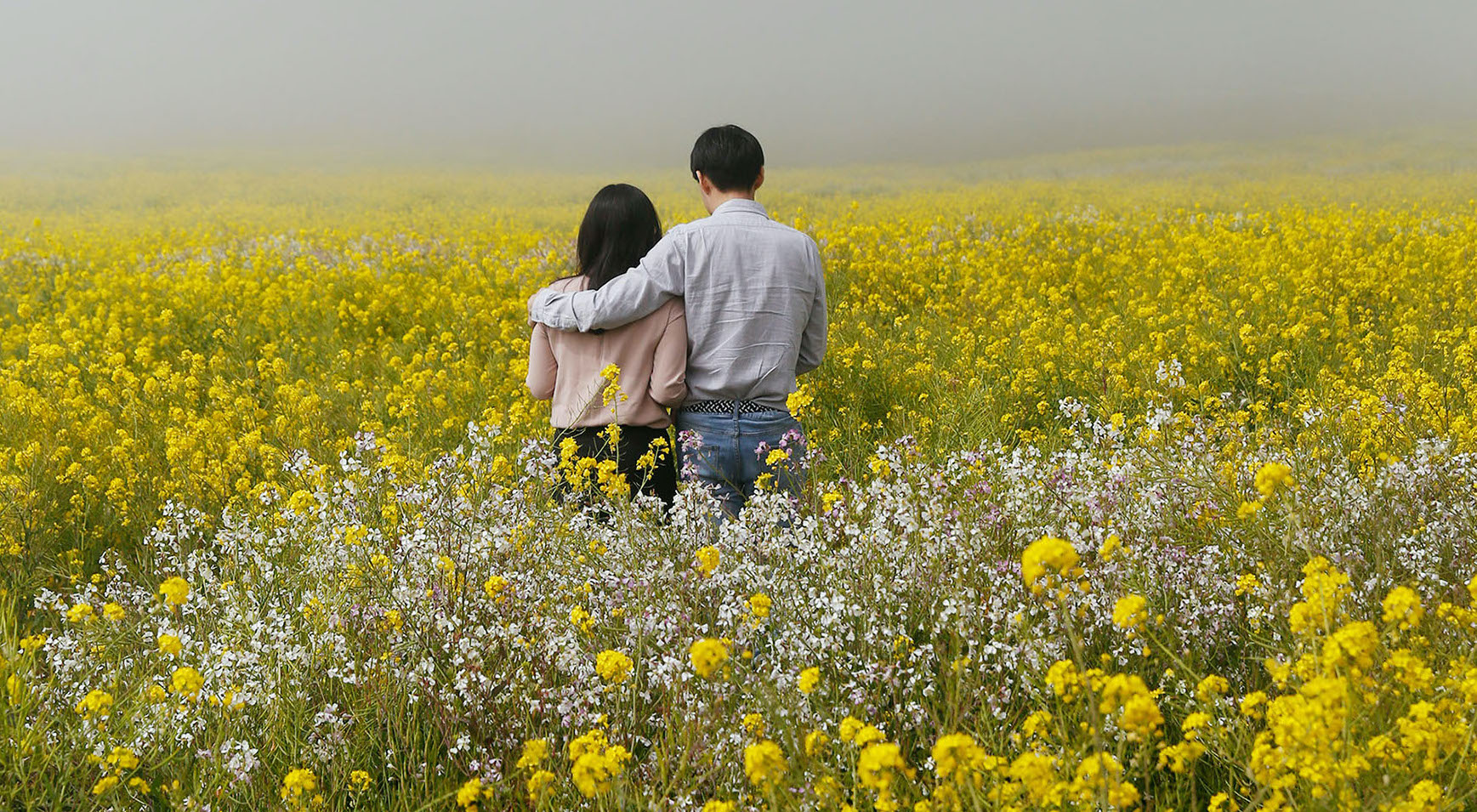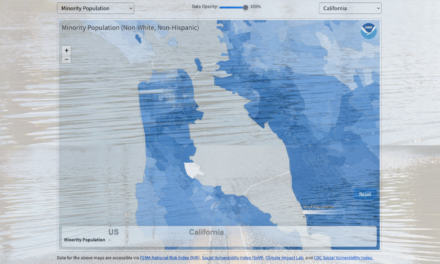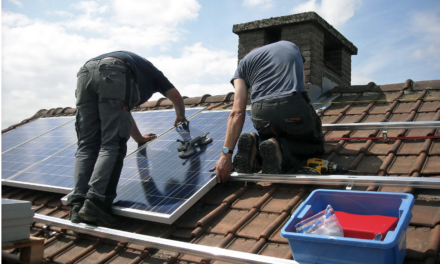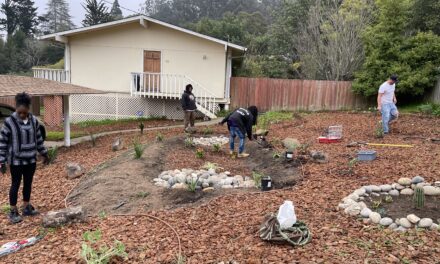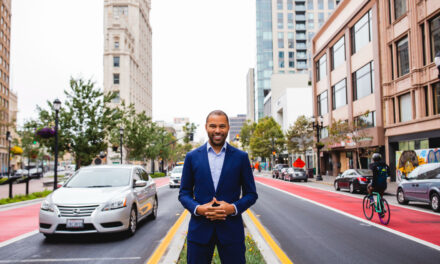Planners Ruminate on Adaptation Lessons
As smoke swirled across California over the long dry summer and fall, hundreds of local and state government planners and climate activists stayed indoors to listen in on the virtual plenaries and workshops of the 2021 California Adaptation Forum. The biennial event, organized by the Local Government Commission, allowed participants to share opinions, insights, and worries about how to adapt to climate change. This year’s June-October series included a deep dive into equity and a hard look at white supremacy in planning institutions, while also sharing a variety of perspectives on holistic planning from around the state and nation. KneeDeep reporters John Hart and Ariel Rubissow Okamoto listened in on a couple of “outcomes” sessions, as well as the final plenary, just to get the flavor of the forum. The following are random snippets of the much larger CAF conversation.
1: Where the People Are…
Everybody agrees that planning must involve affected communities—especially disadvantaged ones—but the outreach sometimes doesn’t feel quite real. How to do it right? One recurrent theme: “Go to people where they are.” Begin by learning about and respecting existing organizations, networks, and concerns; build on efforts that are already underway; pay attention to people’s habits, schedules, and preferred meeting places. Noticing that an expensive “cooling center” sat empty during a heat wave, the LA organization Climate Resolve raised money to retrofit an already well-used space, the Boyle Heights Arts Conservancy, to serve this additional need. Hiring local youth to do a survey, CR also learned that this heavily Latino community is inclined to seek refuge “somewhere outdoors with shade,” suggesting more focus on expanding local parks. “We tend to think first about the problem and last about the people,” says policy analyst Chase Engelhardt. “Invert that. Think about where the people are.” JH
2: Island Back…
The City Of Eureka gave the Wiyot people of Northern California’s Humboldt County Tuluwat Island in 2017. “We were the first people to receive land back without a lawsuit,” said Michelle Vassel, administrator of Wiyot Ancestral Territory. Vassel spoke at the forum about “place-based healing” as central to climate resilience. “Tuluwat was a sacred space for us,” she said. Washell also described the Dishgama Humboldt project, an indigenous-led land trust funded by a local “honor” tax and capital partners that is restoring the island and collaborating on urban housing development, among other projects. “Dishgama” means “love” in the Wiyot language, and the project is undertaking “regenerative economic development to heal trauma and increase resilience,” she said. David Cobb, a self-described southern white man who now works collaboratively with Vassel, spoke of the ecological and economic decline brought about by the “extractive colonialist” activities of settlers in Wiyot territory. “I’ve made an intentional effort to decolonize myself, I was not brought up to be a good ancestor,” he said. The new land trust is thinking ahead over multiple generations, with a planning horizon extending 250 years. ARO
3: Systemic Inequity...
“People are experiencing intersecting, colliding crises all coming from the systemic inequities,” Jacqui Patterson said at a forum session touching on advancing equity. “We shouldn’t be trying to accommodate inequities, we should be trying to eliminate vulnerabilities,” said Patterson, Senior Director of the NAACP Environmental and Climate Justice Program. She gave 12 examples of how to do this, ranging from participatory budgeting to water security to getting money out of politics. In the same session, Watt’s Rising’s Ivory Chamberlain described racist land use policies that located metal smelters, flight paths, trucking corridors, and four public housing projects in and around her 2.2-square-mile Los Angeles community. Watts Rising is working to address pollution and resilience with the help of one of the state’s Transformative Climate Communities grants. “Anything designed without us is not for us. You need to go at the pace the community dictates if you want to be authentic,” Chamberlain said, while recognizing the urgency of climate action. Another speaker in the session, Amber Weaver, talked about her small North Carolina town’s climate emergency declaration in 2020. In researching what other cities were doing, she realized that urban sustainability networks “leaned toward white wealth,” and that frontline communities often didn’t have the time or opportunity to weigh in. ARO
4: Beach Back...
Black Americans moving out West in the early 1900s struggled to achieve their own California dream. The opportunity to enjoy leisure was not an “optional add to civil rights,” said historian Dr. Alison Rose Jefferson at the forum. One family started Bruce’s Beach Resort on the shores of Santa Monica Bay in 1912. For a time, the resort was a vibrant gathering place for Blacks and Black-owned businesses. But “white-only” local politics eventually succeeded in seizing the property from the Bruce family, a story that resonates with the experiences of Blacks all over the country today. In 2020, as part of the racial reckoning around Black Lives Matter, Governor Newsom returned the beachfront real estate to Bruce family descendants with an apology. “It was the first land returned to a Black family by the government,” said Jefferson. With such reckonings comes incremental social resilience. ARO
5: Cross Boundaries...
Faced with the need to cooperate on sea level rise, San Mateo County formed a new countywide agency; Marin jurisdictions opted to work with what they’ve got. Both approaches show promise. San Mateo’s OneShoreline (alias the San Mateo County Flood and Sea Level Rise Resiliency District) set up shop in 2020. At the forum, Len Materman, Chief Executive Officer, pointed to a success on the northern bayshore, where San Francisco International Airport and the cities of Burlingame and Millbrae each faced the need for a seawall. “’Can you help bring us together on a larger project?’ they asked.” The upshot is that fewer miles of shore will be hardened. In Marin, county and city planners put their trust in joint work on a Marin County Multijurisdictional Local Hazard Mitigation Plan. Though a Grand Jury recommended a new agency, “we elected a ‘tying in’ model,” said Cory Bytof, San Rafael Sustainability Program Manager. “We rely quite a bit on Leslie Lacko (a county Long Range Planner) and her staff.” Bytof went on: “Find your jurisdictional walls and break them down, or find ways to work across them.” JH
6: Mindful of Efficiencies...
“We are the headwaters of the State Water Project,” said Jonathan Kusel at forum sessions related to integrated planning. Kusel is Executive Director of the Sierra Institute for Community and Environment, headquartered in Taylorsville on the North Fork of the Feather River above Lake Oroville. Though the watershed yields ecosystem services valued at $25 million annually, money for care of the land is scarce. Forest deterioration has already reduced inflows to Oroville to the tune of 400,000 acre-feet, 2% to 3% of total runoff toward the Delta. The Institute works to rebuild both ecosystem and economy, partly by finding uses for small-diameter and damaged trees from the overstocked forest. “Forest and watershed restoration in California is not going to succeed unless we simultaneously invest in wood utilization,” said Kusel. “We’re buying a sawmill now.” JH
7: Pay Water Forward...
The Inland Empire Utility Agency (Chino Hills) is a southern California water district with a yen to do right by the Delta. Intermediate in scale between the vast Metropolitan Water District and local suppliers, the Agency gets 30% of its water from the State Water Project but 60% from its own carefully managed groundwater basin and 10% from recycled wastewater. As part of its Chino Basin Program, the Agency plans to return water to the State Water Project for environmental uses in dry years. The cheering section includes the likes of the Nature Conservancy and the Golden Gate Salmon Association, who have called the program “an important new pathway in water management.” The project involves new injection and extraction wells and interconnections among local agencies. “It’s a lot of miles of pipeline,” said Sylvie Lee, Manager of Strategic Planning & Resources, at a forum session on catalyzing meaningful action. “This is a big concept and it’s going to take quite a few years to realize.” JH
8: Disaster Dollars...
NOAA tracking suggests the US is now experiencing 15 billion-dollar disasters per year. Every disaster dollar spent on mitigation requires another $11 in recovery, according to a National Building Institute study. “Disasters always start and end locally,” reflected the FEMA mitigation director Katie Lipiecki at the forum. Traditionally, Americans rely on insurance to be ‘made whole” after a disaster, she said. Increasingly, however, insurers are hiking rates or even denying coverage for those in flood, fire, and hurricane-prone zones. Both the most vulnerable, and the newly-uninsurable, look to disaster relief dollars from their own pockets (tax dollars) to bail them out of living in the world’s widening and more-frequently occurring disaster zones. “Our success is reliant on creating resilience before disasters, which saves money,” said Lipiecki, citing California’s long-standing resilient building codes (quake and fire-proof) as a good investment. ARO
9: Personal Resilience Practices...
Asked in a final plenary how they remain positive faced with the ongoing uncertainties of climate change and the pandemic, forum participants shared a few personal resilience practices: Activist Jacqui Patterson holds “hiking meetings.” State deputy director for climate resilience, Nuin-Tara Key, “takes time to celebrate successes, partnerships and collaborations.” Wiyot tribal leader Michelle Vassel savors noticing the results of her work, even after a long wait to make progress: “Just one of those can keep me going for a long time.” Forum organizer Julia Kim shared: “Seeing the climate adaptation field adapt itself is rewarding.” ARO
10: Next Grand Challenge?
As climate change accelerates, the frontlines of climate resilience seem to be shapeshifting daily. Every year, California willingly goes boldly where no one has gone before (Trekkie talk). Asked to predict the next grand challenge for adaptation, forum participants shared some priorities. For California’s Key: “Urgency. If we continue to be in a reactive state, we’ll never catch up. For FEMA’s Lipiecki: “Deciding where and how to rebuild? People love their communities, and have a sense of place, but when do we talk about retreat?” For Wiyot’s Vassel: “Place-based healing. Our environment has been traumatized and it’s ugly. We all need to find ways to heal that trauma in the place where we live. When you heal places, you heal people.” ARO
Other Recent Posts
Slow Progress on Shade For California’s Hottest Desert Towns
Coachella Valley communities face record temperatures with little shade. Policy changes lag as local groups push for heat equity.
In Uncertain Times, the Port of Oakland Goes Electric
A $322M grant powers Oakland’s port electrification — cleaning air, cutting emissions, and investing in community justice.
Testing Adaptation Limits: Mariposa Trails, Marin Roads & San Francisco Greenspace
In KneeDeep’s new column, The Practice, we daylight how designers, engineers and planners are helping communities adapt to a changing climate.
ReaderBoard
Once a month we share reader announcements: jobs, events, reports, and more.
Boxes of Mud Could Tell a Hopeful Sediment Story
Scientists are testing whether dredged sediment placed in nearby shallows can help our wetlands keep pace with rising seas. Tiny tracers may reveal the answer.
“I Invite Everyone To Be a Scientist”
Plant tissue culture can help endangered species adapt to climate change. Amateur plant biologist Jasmine Neal’s community lab could make this tech more accessible.
How To Explain Extreme Weather Without the Fear Factor
Fear-based messaging about extreme weather can backfire. Here are some simple metaphors to explain climate change.
Live Near a Tiny Library? Join Our Citizen Marketing Campaign
KneeDeep asks readers to place paper zines in tiny street libraries to help us reach new folks.
Join KneeDeep Times for Lightning Talks with 8 Local Reporters at SF Climate Week
Lightning Talks with 8 Reporters for SF Climate Week
Staying Wise About Fire – 5 Years Post-CZU
As insurance companies pull out and wildfire seasons intensify, Santa Cruz County residents navigate the complexities of staying fire-ready.






